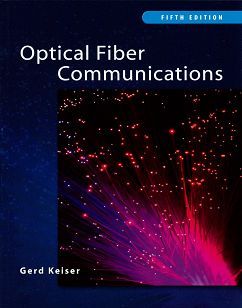書籍分類

Optical Fiber Communications 5/e
作者:Gerd Keiser
原價:NT$ 1,030
ISBN:9789814575690
版次:5
年份:2015
出版商:McGraw-Hill
頁數/規格:608頁/平裝單色
版次:5
年份:2015
出版商:McGraw-Hill
頁數/規格:608頁/平裝單色
內容介紹 本書特色 目錄
- Description
High-capacity telecommunication networks based on optical fiber technology have become an indispensable part of society with applications ranging from simple web browsing to critical healthcare diagnosis and cloud computing. Since users expect these services to always be available, careful engineering is required in all technologies ranging from component development to network operations. This expanded fifth edition presents the fundamental principles for understanding and applying these technologies to modern lightwave networks.


